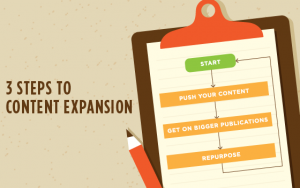 LinkedIn is the social network that everyone uses and no one uses well. Twitter and Facebook come naturally enough to most people, and after some practice most companies do a decent job using those platforms.
LinkedIn is the social network that everyone uses and no one uses well. Twitter and Facebook come naturally enough to most people, and after some practice most companies do a decent job using those platforms.
But LinkedIn is a different beast. It’s social, but it’s professional. You’re connecting for business purposes, but you shouldn’t try to sell too much. At first glance, it looks like an online resume, but it really isn’t.
Many professionals and companies have tried using LinkedIn for business or marketing but failed to get much ROI from it. Sound familiar? Here are 13 LinkedIn tips for better business results.
LinkedIn Mistakes You Need to Stop Making Now
1) You don’t have a profile image.
This should be a given by now, but I’m surprised how often I see LinkedIn profiles with no photo or an inappropriate one, or simply a poor-quality selfie. A professional-looking photo of yourself establishes credibility and says you’re active on LinkedIn.
And because LinkedIn is strictly a professional networking site, keep your photo strictly professional—like the one on the right, below.

2) You aren’t showing off your work.
LinkedIn lets you upload projects and presentations to your profile page. You can add SlideShare presentations, videos and image galleries. Don’t miss this opportunity to showcase your work.
3) Your status is in stasis.
You should update your status on a regular basis. This keeps you visible and provides value to your connections. And status updates are a great way to expand your reach – when your connections share or comment on your update, their connections see it. Don’t over-post, though. A good guideline is to post one article per week and 1-2 short updates per day.
4) You haven’t customized your URL.
Your default profile URL is something like http://www.linkedin.com/in/john-doe-3468529. Looks ugly, doesn’t it? Good news: you can customize it to anything you like. That’s much easier to remember, and it looks so much better on your business cards.
Your LinkedIn company page should have a custom URL too.
5) You aren’t publishing long-form posts.
LinkedIn Publishing is fairly new so a lot of people haven’t figured it out yet. Long-form posts let you post blog-style content directly in LinkedIn. This provides several benefits:
- Your content becomes part of your professional profile. It is displayed on the Posts section of your LinkedIn profile.
- It’s shared with your connections and followers.
- Members not in your network can now follow you from your long-form post to receive updates when you publish next.
- Your long-form post is searchable both on and off of LinkedIn.
- In some cases, a long-form post can be tagged by LinkedIn’s algorithm for distribution on a particular channel, including LinkedIn Pulse.
LinkedIn provides step-by-step instructions for publishing long-form posts. Keep in mind that the content you post on LinkedIn belongs to LinkedIn. If the service gets discontinued one day, your content will be lost.
6) You’re using the default connection request.
This should also be common knowledge by now. If you want to provide value to your connections, show it to them from the start. Craft personalized invitations instead of using the canned generic connection request that anyone could do without any effort. You want to stand out as someone of value!

7) You immediately try to sell to new connections.
No one connected with you hoping you would immediately try to wrangle a sale out of them. They expect value and collaborative networking. Focus on helping, not selling.
8) You’re ignoring your connections.
Once you’ve got your connections, don’t neglect them. Engage in a professional manner with them (this isn’t Twitter or Facebook) by responding to their status updates or sharing helpful links. Try to check in with 3-5 people per week.
9) You’re lurking.
The more you engage with LinkedIn groups, the more you’ll establish yourself as a thought leader. Don’t use group discussions as sales platforms, but provide value to the group participants. You can also start discussions by posting questions and getting input from others.
10) You have endorsements, but no recommendations.
A ubiquitous critique of LinkedIn’s endorsements is that anyone can click a button to endorse you, even if they have no knowledge of your skills. It’s a meaningless endorsement. Recommendations, on the other hand, require thought and detail. A solid endorsement is a narrative that testifies to your abilities. Don’t skimp on requesting recommendations. (A great way to get recommendations is to give them, too. People love returning the favor.)
11) You don’t have a company page.
If your business doesn’t have a company page yet, create one! This is an ideal way to post company updates, blog articles, news and events and more. You can attract and engage with followers who may not be a part of your own personal network.
Also, be sure to have your employees follow your company on LinkedIn!
Want some great examples of company pages? Check out NPR, Mashable and Black Rock. Also take a look at this best practices guide from LinkedIn.
12) You don’t encourage your employees to post company updates.
LinkedIn is a lot more than a job search tool. By encouraging your employees to use LinkedIn, you’re enabling them to be brand ambassadors. When employees share company updates, they increase your company’s visibility. Plus, when employees are sharing about their work, it shows that they take pride in their company and believe in its mission – and that carries a lot of weight with their followers.
13) Your profile isn’t optimized for search.
Make it easy for LinkedIn users to find your profile page and your company page. Most of the tips above will help with optimization, but add these best practices too:
- Include relevant keywords – but make sure you write for humans, not robots.
- Use a keyword-rich, specific headline (or tagline).
- Include links to your company website and Twitter account. Search engines love external links – it helps establish authority.
- Keep updating your content. Search engines ignore pages that aren’t maintained.
(658)






